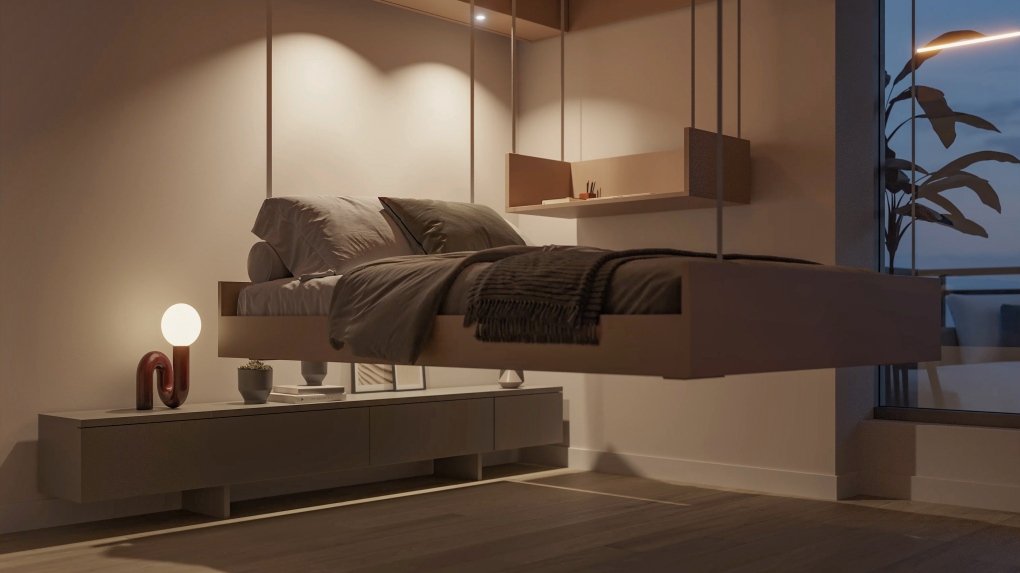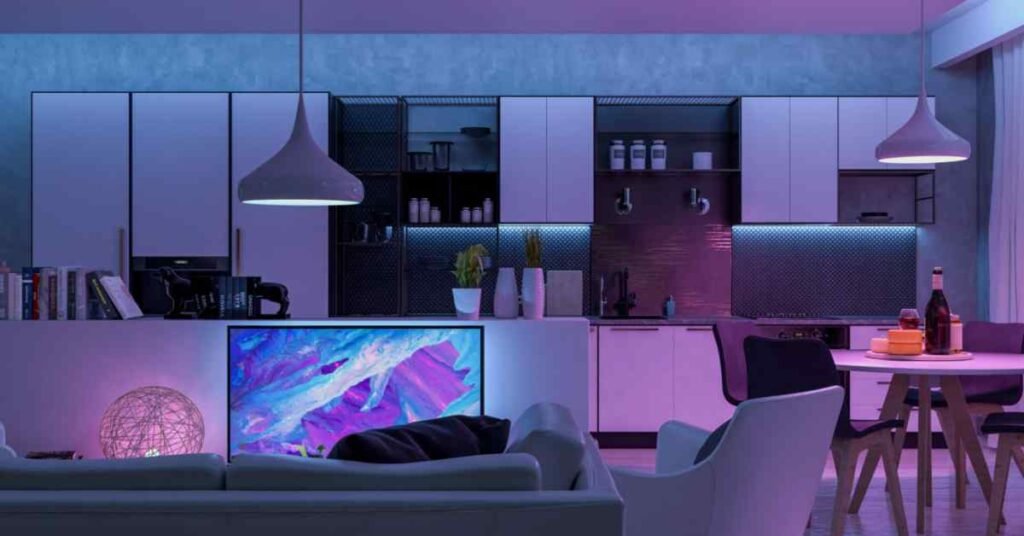In an era where technology seamlessly intertwines with our daily lives, luxury has transcended beyond opulent aesthetics. Smart homes now represent more than just living spaces—they embody elegance, comfort, and convenience. The infusion of cutting-edge technology into interior design has given rise to a new paradigm — one where every corner of our homes becomes a seamless blend of sophistication and functionality. Join us as we explore the transformative world of luxury smart home furnishings, where your home becomes a sanctuary of style and efficiency, setting the stage for a lifestyle that effortlessly adapts to the demands of the modern world. In this detailed guide, we immerse ourselves in the realm of luxury smart home furnishings—where innovation meets beauty, and where the mundane transcends into something extraordinary.
Evolution of Smart Home Technology
In the past decade, smart home technology has evolved significantly, transitioning from a novelty to an integral part of modern households. From the introduction of basic home automation systems to the integration of AI-powered devices, the evolution has been remarkable.
The integration of luxury with smart home technology has opened avenues for sophisticated designs and enhanced functionalities. What was once considered futuristic is now a reality, with luxury smart home furnishings redefining the concept of lavish living.
Smart Home Furnishings: Where Form Meets Function

Luxury smart home furnishings epitomize the perfect amalgamation of contemporary elegance and practicality. Each component transcends traditional expectations, embodying not just aesthetic allure but also cutting-edge functionality. Whether it’s the transformative capabilities of smart lighting, the seamless fusion of automated window treatments for privacy and style, or the integration of sophisticated security measures and immersive entertainment systems, every facet of these furnishings showcases a blend of sophistication and utility. These elements collectively redefine the essence of home decor, offering a glimpse into a future where function doesn’t just meet form but elevates it to an artful expression of modern living.
Integration of Luxury and Technology
The seamless integration of luxury and technology signifies a profound shift in how we perceive and experience contemporary living. It’s more than the mere fusion of gadgets and opulence; it’s a transformative convergence that enhances our daily lives. From luxurious furnishings in smart homes to high-tech gadgets meticulously designed for both style and substance, this integration takes myriad forms. Whether it’s the sleek aesthetics of luxury gadgets or the fusion of technology within home interiors, this union elevates the user experience and anticipates a future where innovation and luxury meld seamlessly, defining a new era where cutting-edge technology epitomizes refined elegance.
Key Elements of Luxury Smart Home Furnishings
1. Innovative Materials and Craftsmanship
Luxury smart home furnishings feature exquisite materials, from premium woods and metals to fine fabrics. Impeccable craftsmanship ensures that each piece is not just a functional item but also a work of art.
2. Intelligent Functionality
Beyond conventional furniture, smart furnishings incorporate intelligent features, allowing for customization, adaptability, and often automation. Adjustable settings, personalized configurations, and intuitive controls characterize their advanced functionality.
3. Seamless Integration
The ability to seamlessly integrate with other smart home devices is crucial. Whether it’s lighting systems, security protocols, or entertainment setups, these furnishings work cohesively within the broader smart home ecosystem.
4. Smart Lighting Solutions
Luxury smart home furnishings often include advanced lighting options. This goes beyond simple illumination, offering features like customizable color schemes, automated scenes, and integration with voice assistants for a truly bespoke lighting experience.
5. Automated Window Treatments
Motorized blinds or curtains add a layer of convenience and elegance. Integration with smart home systems allows for automated adjustments based on time, sunlight levels, or user preferences.
6. High-Tech Security Features
Security is paramount, and luxury smart furnishings often integrate discreetly with high-tech security solutions. This can include smart locks, biometric access, and surveillance systems, ensuring both safety and a sleek aesthetic.
7. Audio-Visual Integration
Transforming entertainment spaces, these furnishings incorporate cutting-edge audio-visual systems. Discreetly placed speakers, high-quality sound equipment, and smart TVs with intuitive controls contribute to an immersive multimedia experience.
8. Climate Control Sophistication
Intelligent climate control systems adapt to user preferences, optimizing energy efficiency and ensuring a comfortable environment. Stylish smart thermostats contribute to both the aesthetics and functionality of the living space.
9. Wireless Connectivity
Luxury smart home furnishings often prioritize wireless connectivity. This ensures easy communication and coordination with other smart devices, contributing to a streamlined, clutter-free environment.
10. Centralized Control Hubs
Stylish and user-friendly smart home controllers serve as central hubs, allowing residents to manage various smart devices from one location. This centralized control enhances the overall user experience.
Benefits of Incorporating Smart Furnishings into Modern Interior Designs
1. Enhanced Convenience
– Automated Control: Smart furnishings enable automated control of various elements, such as lighting, climate, and security, offering unparalleled convenience with the ability to adjust settings effortlessly.
2. Energy Efficiency
– Optimized Resource Usage: Intelligent climate control and lighting systems contribute to energy efficiency by optimizing resource usage based on occupancy, preferences, and external conditions.
3. Aesthetic Integration
– Seamless Design Harmony: Smart furnishings are designed with aesthetics in mind, seamlessly integrating into modern interiors. They complement the overall design theme, creating a cohesive and visually appealing atmosphere.
4. Space Optimization
– Multifunctional Design: Many smart furnishings are multifunctional, serving multiple purposes and optimizing the use of space. This is especially valuable in modern, compact living environments.
5. Personalized Ambiance
– Customizable Atmosphere: Smart lighting solutions and climate control allow for the creation of personalized atmospheres. Adjusting color temperatures, lighting scenes, and environmental settings enhances the overall ambiance of the space.
6. Security Enhancement
– Intelligent Security Features: Integration of smart security features, such as surveillance cameras and smart locks, enhances the safety of the living space without compromising the modern design aesthetic.
7. Tech as Design Element
– Statement Pieces: Smart furnishings can serve as unique design elements, adding a modern and sophisticated touch to the interior. Technology becomes a part of the overall design narrative.
8. Flexibility in Design
– Adaptive Layouts: The flexibility offered by smart furnishings allows for adaptable layouts. Spaces can be easily reconfigured to accommodate changing needs, making them suitable for dynamic modern lifestyles.
9. Remote Accessibility
– Control from Anywhere: The ability to control smart furnishings remotely adds a layer of convenience. Whether adjusting settings or checking security features, users can manage their living spaces from anywhere.
10. Increased Property Value
– Modern Appeal: Homes equipped with smart furnishings often have increased market appeal. Potential buyers or renters are drawn to the modernity, convenience, and technological sophistication offered by such spaces.
11. Sustainable Living
– Eco-Friendly Practices: Some smart furnishings contribute to sustainable living practices by promoting energy efficiency and responsible resource usage, aligning with the growing emphasis on eco-friendly design.
12. User-Centric Experience
– Tailored Environments: Smart furnishings allow for personalized experiences, tailoring the living environment to individual preferences. This user-centric approach enhances the overall living experience.
Trends in Smart Home Furnishing Designs
1. Integration of Natural Materials
– The trend was leaning towards integrating smart features seamlessly into furnishings made from natural materials like wood and stone. This approach aimed to maintain a balance between technology and the warmth of natural elements.
2. Sustainable and Eco-Friendly Designs
– Sustainability was a growing concern, leading to the incorporation of eco-friendly materials and energy-efficient technologies in smart home furnishings. Designs focused on minimizing environmental impact.
3. Modularity and Customization
– Modular and customizable smart furnishings gained popularity. These designs allowed users to adapt their furniture to changing needs, promoting flexibility and personalization in living spaces.
4. Artificial Intelligence (AI) Integration
– AI-driven features were becoming more prevalent, enabling furnishings to learn user preferences and adapt automatically. This included AI-based climate control, lighting adjustments, and personalized settings.
5. Wireless Charging Integration
– Smart furniture with built-in wireless charging capabilities for devices like smartphones and tablets was on the rise. This feature added convenience and reduced clutter.
6. Voice Control and Smart Assistants
– Integration with voice-activated technology and smart assistants was a significant trend. Furnishings that responded to voice commands for tasks like adjusting lighting, playing music, or managing other smart devices gained popularity.
7. Augmented Reality (AR) and Virtual Reality (VR)
– Some designers were exploring the use of AR and VR technologies in smart home furnishings. This allowed users to visualize how furniture would look in their homes before making a purchase.
8. Health and Wellness Features
– Smart furnishings designed to enhance health and well-being were emerging. Examples included furniture with built-in air purifiers, wellness-tracking capabilities, and ergonomic designs to support overall health.
9. Minimalist Aesthetics
– A minimalist design approach was evident, focusing on clean lines, simplicity, and a clutter-free appearance. Smart features were seamlessly integrated into the design without compromising the overall aesthetic.
10. Biophilic Design Elements
– Designs were incorporating biophilic elements, bringing nature indoors. This included furnishings with built-in planters, natural color schemes, and designs inspired by organic shapes.
11. Security-Enhancing Features
– Smart home furnishings with enhanced security features, such as discreetly integrated cameras and smart locks, were gaining traction. These features addressed both safety concerns and the desire for seamless design.
12. Collaborations with Tech Companies
– Collaborations between furniture manufacturers and tech companies were fostering the development of innovative smart home furnishings. These partnerships aimed to create products that seamlessly merged design with cutting-edge technology.
Remember that trends in smart home furnishings can evolve rapidly, influenced by technological advancements, consumer preferences, and broader design movements.
Also Read: Adjustable Smart Beds for Customized Sleep Comfort
In conclusion, luxury smart home furnishings stand as a testament to the fusion of sophistication and innovation. This evolution has redefined not just our living spaces but also our lifestyles. The seamless integration of state-of-the-art technology into interior design has given rise to homes that are not just smart but also reflective of our individuality and aspirations. As we gaze into the future, the trajectory is clear: a landscape where luxury smart home furnishings have become a cornerstone of modern living. Beyond mere embellishments, they signify a revolution, ushering in an era where homes transform into sanctuaries of comfort, style, and unparalleled convenience.
